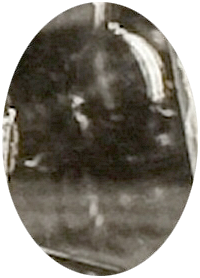Emily Yoffe, senior editor at
The Free Press, here. Last year while scrolling on X, I came across a
post that caught my attention. It was a short clip
of an interview with Marshall McLuhan, a Canadian philosopher and
English professor. I had vague memories of McLuhan—who died in 1980—as a
semi-famous intellectual of his day. The young writer who posted the
clip, Benjamin Carlson, promised it was “one of the most mind-bending
riffs on identity in the digital age I’ve ever heard.”
As
I listened, I got a rush from the prescience of McLuhan’s words. It was
as if this man, now more than 40 years dead, was a messenger from the
future who had been sent to our past, and now was explaining to us the
world we live in today.
I wanted to know more about what McLuhan foresaw, and the fascinating essay below from Benjamin Carlson is the result.
Meanwhile,
we at The Free Press started talking about whether there are other
McLuhans from the past, people who predicted our current moment. That
is, people whose words, work, and life illuminated something essential
about the increasingly strange times we find ourselves in today.
That’s
how our new limited series, The Prophets, was born. Every Saturday for
the next several weeks, we will bring to you an activist, scientist,
writer, or thinker who somehow knew what would happen years or decades
after their deaths. None of them were right about everything. Indeed,
some were significantly wrong about significant things. But they all saw
something important coming.
And
because every prophet deserves their own brilliant scribe, we asked
some of our favorite writers to bring you the stories of our prophets.
Many of these writers have been experiencing—and covering—the very
issues the prophets predicted.
We
hope our new series delights, inspires, and occasionally even
infuriates you. Ultimately, though, we think these essays make our times
easier to understand—and will help you feel less alone in our crazy,
fractured world.
You are reading this essay because Marshall McLuhan, in some sense, planned for it.
In
the mid-1960s, when he exploded onto the American pop-cultural
scene—which was also planned; more about this in a moment—he decided to
embrace television.
This was not because
he was born for TV. He was too “hot” for the medium (in the McLuhanesque
sense of being uptight), as he famously said of Richard Nixon about his
presidential debate loss to the “cool” John F. Kennedy.
Rather,
McLuhan used TV because he, more than anyone of his time, understood
how electric technology was transforming society and, even then, had
already transformed it.
He knew that
whether he liked it or not, TV was where he had to be. His mission was
to wake people up—to “needle the somnambulists,” as he put it. (This one
phrase gives you a flavor of his style: deadpan and unabashedly
esoteric.) If TV was as revolutionary as he understood it to be, his
message had to run on TV to have any chance of influencing the
present—and being revisited in the future.
I first stumbled upon Marshall McLuhan a
year ago on YouTube. Within a minute or two of watching a clip, I was
amazed: here was a man who, in 1977, seemed to be describing the
dislocating experience of living in 2023, and he did so with more insight than people living today.
That the words were coming from a craggy, mustachioed man in a rumpled
suit only enhanced the eerie feeling. Here was a professor-as-prophet.
McLuhan says, in part, to his TV host:
Everybody
has become porous. They’ve got the light and the messages go right
through us. By the way, at this moment we are on the air, and on the air
we do not have any physical body. When you’re on the telephone, or on
radio, or on TV, you don’t have a physical body. You’re just an image on
the air. When you don’t have a physical body you’re a discarnate being.
You have a very different relation to the world around you. And this, I
think, has been one of the big effects of the electric age. It has
deprived people, really, of their private identity. Everybody tends to
merge his identity with other people at the speed of light. It’s called
being mass man.
I shared the clip
on Twitter and it went viral with more than 6 million views —including
both of Twitter’s father figures, Jack Dorsey and Elon Musk—suggesting I
was not alone in my reaction.
Something about Marshall McLuhan has struck a chord—has resonance, as he liked to say. (He believed the electric age was fundamentally acoustic;
a confusing concept, but roughly meaning that everything occurs
simultaneously.) The long-deceased Canadian scholar—he died in 1980—who
first blew people’s minds in the mid-1960s, is blowing people’s minds
again.
This is not because he predicted
specific devices or apps, but because he understood, with a poet’s
intuition, the effects of the electronic age on human psychology.
He
did not get everything right. But those things he did get right stemmed
from his deep insight into the shift from the mechanical age (of which
print was a part) to the electronic era, whose implications are still
unfolding....










